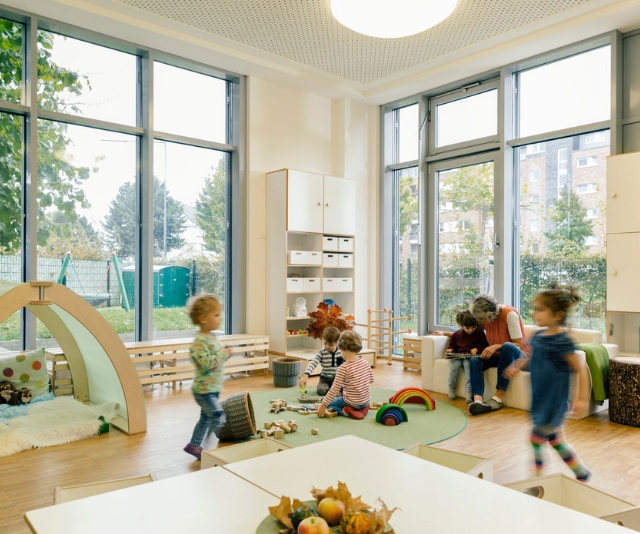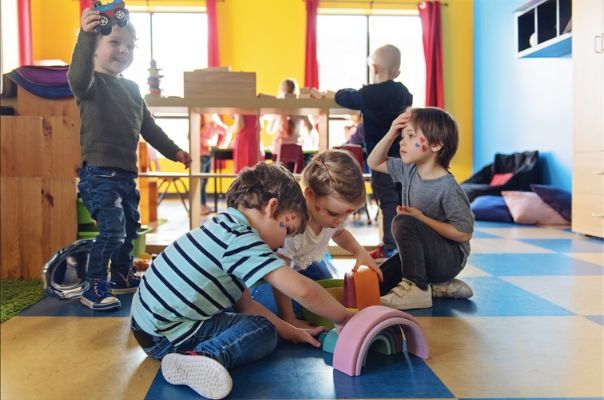5 compelling reasons why ending the government’s free childcare subsidy is disadvantaging women
It's hitting female educators and mothers the hardest.
Over the weekend, the government announced the end of free childcare would end on July 12. While families were not expecting the Federal Government’s three months of childcare subsidy to last forever, many were upset that this is the first sector identified by the government to lose JobKeeper earlier than the September 27 cut-off.
Lana Hallowes is a mum of two boys, aged four and six, and says it’s a shame free childcare is ending.
“I lost work due to the fall-out from the pandemic, so the free childcare has given me some financial reprieve. Thankfully, my husband is in a corona-safe job so we are ok, but I really feel for those who have lost work and now have to go back to paying childcare as they seek employment,” she says.
“I feel free childcare is something we should have in place anyway. It’s about valuing the contribution of parents to the continuation of society – raising the future tax payers.”
Here’s five reasons why the government’s decision to bring back childcare fees will hurt the predominantly female educators and mothers most.
1. The Federal Government’s decision to choose the childcare sector as the first to lose the JobKeeper wage subsidy, when out of any sector it is one of the most female dominated.
No other sector has so far been identified by the Government as losing JobKeeper earlier than the September 27 cut-off.
Early Childhood Australia chief executive Sam Page said: “A lot more women have either lost jobs or lost hours than men and I would’ve thought that involvement in early childhood was one of the best things Government could do to protect jobs for women.
“Both to support women who are relying on childcare to get back to work, but also to support nearly 200,000 who work in this sector, of which 97 per cent are women.”

The government has announced free childcare will end on July 12.
2. The government could have looked into other options for families facing financial hardship.
Labor’s spokeswoman for early childhood education and development, Amanda Rishworth, said “snapping back” to the previous system would hurt families and will act as a “handbrake” on the economy.
“The Government had a number of options on the table. And they chose none of them,” Amanda told ABC News.
“They chose not to change the CCS percentage. Not to look at which groups might really need free child care. They chose just to snap back. What we know is that for many families, the cost of child care prior to this pandemic was just out of reach. It was too expensive and too difficult.
“What the Government said is ‘bad luck’ — ‘bad luck, you are going to face the same fees that you did prior to this’ — one of the most expensive in the world.”
3. Survey results indicate many parents will need to reduce their work hours or their child’s number of childcare days.
According to a recent survey of 2,280 parents by advocacy group The Parenthood, an end to free child care would mean 60 per cent of households will have a parent forced to reduce work when full fees return.
A third of parents said they would need to reduce the number of days their children were in child care, or remove them altogether, if they were charged pre-pandemic fees.
“We know that the decision to return to pre-COVID fees will put an enormous amount of pressure on the sector because services will not be able to function viably if up to a third of families have to take their children out,” says Georgie Dent from The Parenthood.
“We also know that is going to be really devastating for the children themselves, because they will miss out on all the proven, long-term, quantifiable benefits that kids who access early education and care derive.”
4. Withdrawing childcare support so soon will force women to drop out of the workforce and care for their children.
Centre for Future Work senior economist Alison Pennington said ending free childcare is “cruel and makes absolutely no sense.”
“Pulling the plug on it now puts women back into the home, because it’s well recognised that Australia’s childcare system is woefully expensive,” Ms Pennington said.
“And the tax and household income system is actually structured in such a way that it’s financially irrational to put a child in childcare more than two or three days a week – and that’s with two incomes.”
5. Columnist and advocate for education and care in Australia, Lisa Byrant summed up how the end of free childcare will affect so many mums.
“It will also hurt mothers,” she writes in an opinion piece for The Guardian. “No matter how much people would like to consider childcare as something required by both parents, we know that it is almost always the woman who drops her job to look after children when childcare becomes unaffordable, because the reality is that women earn less in Australia than men do.
“When hetrosexual families need to work out which job should go, it often makes more financial sense for it to be the mother’s. And guess what? You can’t get a job if you haven’t organised childcare first. You can’t organise childcare if you don’t have the money to pay for it. Women can’t change that basic equation.”




